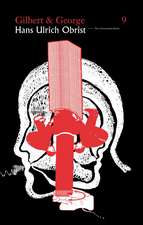Journals, 1939-1977
Autor Keith Vaughanen Limba Engleză Paperback – 12 apr 2015
The Journals are edited by Alan Ross, and in his words they are 'a self-portrait of astonishing honesty: devoid of disguise in any shape or form, or hypocrisy. It is difficult to think of anything in literature they resemble.' The earlier Journals, covering his war and his period of greatest creativity in the late 1940s and 1950s, 'are revealing for the light they shed on a painter's character and, to a lesser extent, working methods.' The last Journals chronicle 'a descent into hell . . . redeemed by their frankness, spleen and dry humour.'
First published in 1966 and then reissued in amplified form in 1989, it is the latter version Faber Finds is reissuing. The fuller edition itself has been out of print for a long time, so its renewed availability will be welcome.
Preț: 173.41 lei
Nou
Puncte Express: 260
Preț estimativ în valută:
33.18€ • 34.73$ • 27.62£
33.18€ • 34.73$ • 27.62£
Carte tipărită la comandă
Livrare economică 27 martie-02 aprilie
Preluare comenzi: 021 569.72.76
Specificații
ISBN-13: 9780571260386
ISBN-10: 0571260381
Pagini: 236
Dimensiuni: 156 x 234 x 13 mm
Greutate: 0.34 kg
Editura: Faber and Faber
ISBN-10: 0571260381
Pagini: 236
Dimensiuni: 156 x 234 x 13 mm
Greutate: 0.34 kg
Editura: Faber and Faber
Notă biografică
Keith Vaughan (1912-1977) was a painter and a writer. As a painter he belonged initially to the Neo-Romantic movement of the 1940s but increasingly developed his own idiosyncratic style. Concentrating on studies of male figures, his style became progressively more abstract.Despite his undeniable stature as an artist, he is perhaps as well known today for his journals which are one of the greatest pieces of confessional writing of the twentieth-century.



